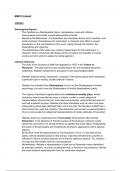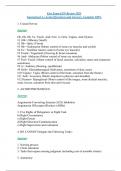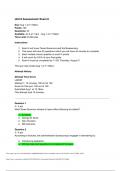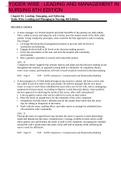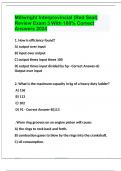Summary
Summary A level English Literature - Webster's The Duchess of Malfi context table - eduquas -
A level English Literature - Webster's The Duchess of Malfi context table - eduquas - includes historical, social, political, literary context on gender, class, social relations, family, religion, contemporary values, different interpretations, staging
[Show more]
